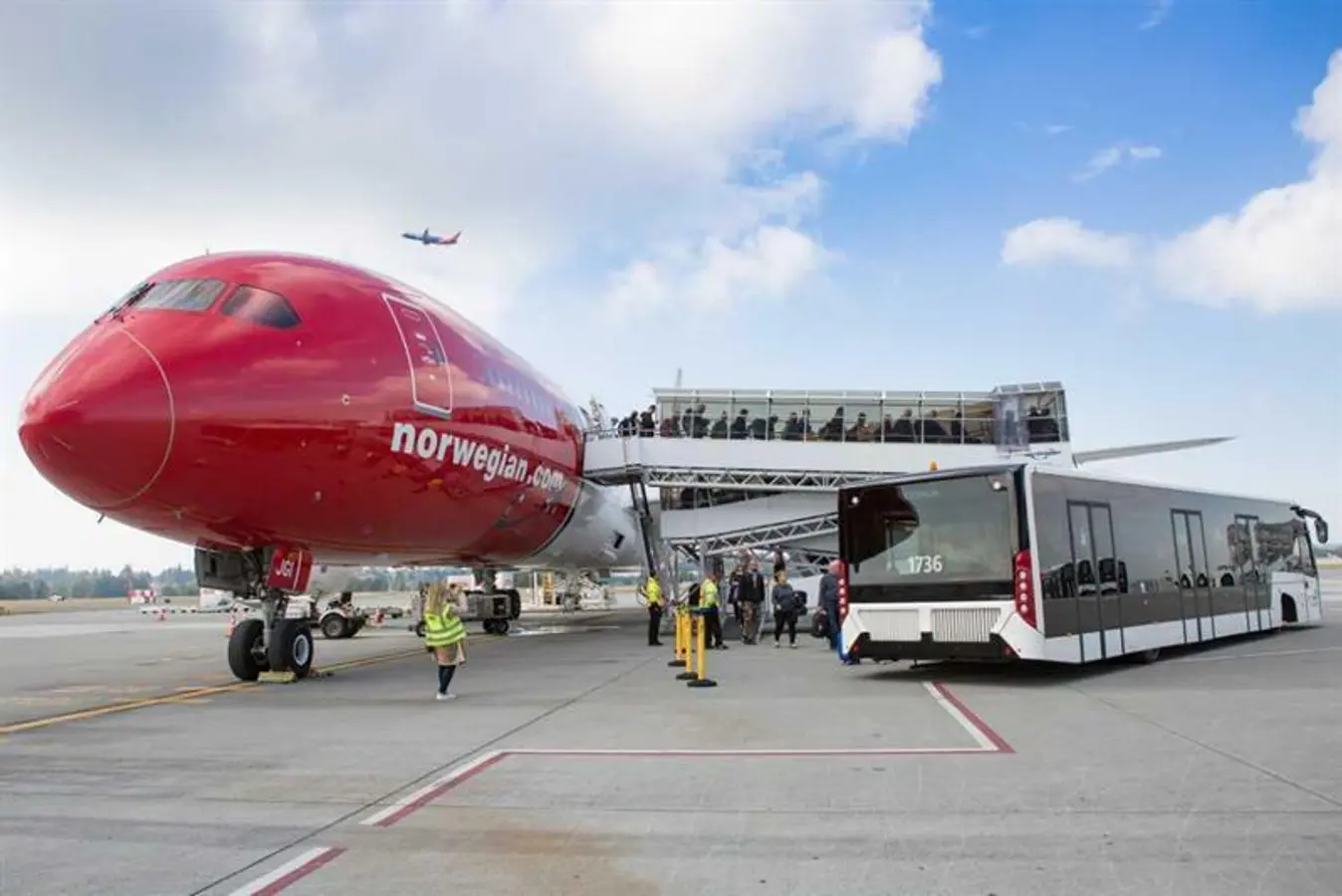
Seattle-Tacoma International Airport (Sea-Tac), in Washington State on the West Coast of the US, benefits from the extensive use of a number of Aviramp mobile walk-through boarding bridges that serve its remote stands; and so too do its airlines and their shared customers – passengers flying in and out of the gateway.
Sea-Tac has a total of 15 of Aviramp’s highly original boarding ramps, two of the latter’s International models designed to handle wide-body aircraft and 13 of its Continental models that serve narrow-body aircraft of up to B757 size. The Port of Seattle, operator of SeaTac, first purchased an Aviramp mobile switchback boarding ramp in the summer of 2017. It leases the equipment to the Seattle-Tacoma Airline Consortium, the grouping of airlines that collaborates on matters such as the bussing operations and passenger loading/unloading at SeaTac’s remote stands. (Alaska Airlines is the hub carrier at Sea-Tac, while Delta is another major carrier flying through the airport, but Sea-Tac welcomes a total of 32 carriers that operate there on a regular basis.) The 15 Aviramp mobile boarding ramps are deployed across Sea-Tac’s 15 remote stands. They were acquired by Port of Seattle to improve customers’ boarding/ disembarking experience, explains Tim Toerber, airline resource & scheduling manager at Sea-Tac. US passengers in particular are not fond of bussing services to remote stands, he points out, and anything that can improve their experience was seen as a good thing. As well as making the business of boarding and disembarking aircraft that much more pleasurable for the majority of passengers – keeping them out of the rain, for example, as well as avoiding the need to clamber up steep passenger stairs – the Aviramp equipment is also ideal for facilitating accessibility for passengers with reduced mobility (PRM). And since the Aviramps’ deployment at the airport: “We have had good feedback from passengers,” Toerber says. “They have really helped passengers to take to remote stand operations here.” Airlines, having been more than encouraging of Sea-Tac to find ways to improve customer service vis-à-vis remote stand operations, have also been happy with the results, he informs. While there are no short-term plans to acquire any more Aviramp equipment, simply because all of Sea-Tac’s remote stands now have ready access to an Aviramp, the process of refining their value has been ongoing. For example, the airport operator has worked with the Telford, England-based equipment supplier on fine-tuning the equipment for Sea-Tac’s use such that Seattle’s Aviramps now have a canopy that overlaps an aircraft’s fuselage so that wind and rain does not enter into the cabin. Different lighting configurations have also been investigated and introduced, amongst other modifications. In fact, says Toerber, Aviramp has been a “good, responsive partner, reacting quickly to our customer feedback”. Clearly, the relationship has been a very positive one, and it is Sea-Tac’s passengers that have gained most as a result.